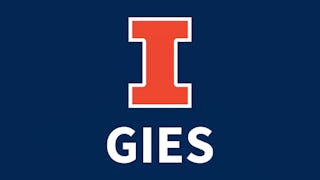The course Asset Pricing I will provide students with the main theoretical and analytical tools to study and understand the economics of financial markets and portfolio choices. After learning the different structure that financial markets can take and the key functions that these perform, learners will analyze how financial markets affect saving and investment decisions in an economy with no uncertainty.



Asset Pricing Fundamentals
This course is part of Finance Specialization

Instructor: Lorenzo Pandolfi
Included with 
Recommended experience
What you'll learn
Understand the principles underlying investors' portfolio choices and the criteria that determine the prices of financial instruments
Understand the main functions performed by the financial markets
Analyzing how the introduction of the financial markets influences the saving choices of households
Analyzing how the introduction of the financial markets influences the investment choices of businesses in an economy without uncertainty
Skills you'll gain
Details to know

Add to your LinkedIn profile
20 assignments
See how employees at top companies are mastering in-demand skills

Build your subject-matter expertise
- Learn new concepts from industry experts
- Gain a foundational understanding of a subject or tool
- Develop job-relevant skills with hands-on projects
- Earn a shareable career certificate

There are 6 modules in this course
By the end of this week, you will learn the various structures financial markets can adopt and comprehend their primary functions. You'll also be able to assess how the establishment of financial markets influences households' choices regarding saving and borrowing, along with companies' decisions regarding investment, all within an economy devoid of uncertainty.
What's included
31 videos4 readings3 assignments
This week you will learn the theoretical principles that underlie individual choices under uncertainty, that is, in the presence of risk, in light of expected utility theory. Additionally, you will examine how to characterize agents' attitudes towards risk and the primary criteria for comparing risky prospects. These criteria include first- and second-order stochastic dominance, as well as the mean-variance criterion.
What's included
21 videos4 readings3 assignments
By the end of this week you will understand how to analyze contingent claim markets and the risk neutral evaluation.
What's included
14 videos4 readings3 assignments
By the end of this week you will learn the principles underlying investors' portfolio choice and to analyze, in particular, how stock market participation depends on individual preferences and stocks' fundamentals (expected return and riskiness).
What's included
15 videos4 readings3 assignments
By the end of this week you will be able to identify the set of efficient portfolios in an economy with many risky assets and to analyze, in this economy, the portfolio choices of investors with mean-variance preferences, so as to characterize stocks' aggregate demand.
What's included
16 videos4 readings4 assignments
By the end of this week, you will learn the concept of equilibrium in financial markets. You'll apply this understanding to an economy featuring numerous risky assets and a riskless asset, all within a framework of risk-averse investors with mean-variance preferences. Additionally, you'll gain the ability to calculate equilibrium prices and expected excess returns. Furthermore, you'll recognize that these values are contingent upon the covariance risk of assets, which is quantified by asset betas.
What's included
17 videos4 readings4 assignments
Earn a career certificate
Add this credential to your LinkedIn profile, resume, or CV. Share it on social media and in your performance review.
Instructor

Offered by
Explore more from Finance
 Status: Free Trial
Status: Free TrialUniversità di Napoli Federico II
 Status: Free Trial
Status: Free TrialUniversity of Illinois Urbana-Champaign
 Status: Preview
Status: Preview Status: Free Trial
Status: Free TrialColumbia University
Why people choose Coursera for their career





Open new doors with Coursera Plus
Unlimited access to 10,000+ world-class courses, hands-on projects, and job-ready certificate programs - all included in your subscription
Advance your career with an online degree
Earn a degree from world-class universities - 100% online
Join over 3,400 global companies that choose Coursera for Business
Upskill your employees to excel in the digital economy
Frequently asked questions
To access the course materials, assignments and to earn a Certificate, you will need to purchase the Certificate experience when you enroll in a course. You can try a Free Trial instead, or apply for Financial Aid. The course may offer 'Full Course, No Certificate' instead. This option lets you see all course materials, submit required assessments, and get a final grade. This also means that you will not be able to purchase a Certificate experience.
When you enroll in the course, you get access to all of the courses in the Specialization, and you earn a certificate when you complete the work. Your electronic Certificate will be added to your Accomplishments page - from there, you can print your Certificate or add it to your LinkedIn profile.
Yes. In select learning programs, you can apply for financial aid or a scholarship if you can’t afford the enrollment fee. If fin aid or scholarship is available for your learning program selection, you’ll find a link to apply on the description page.
More questions
Financial aid available,

